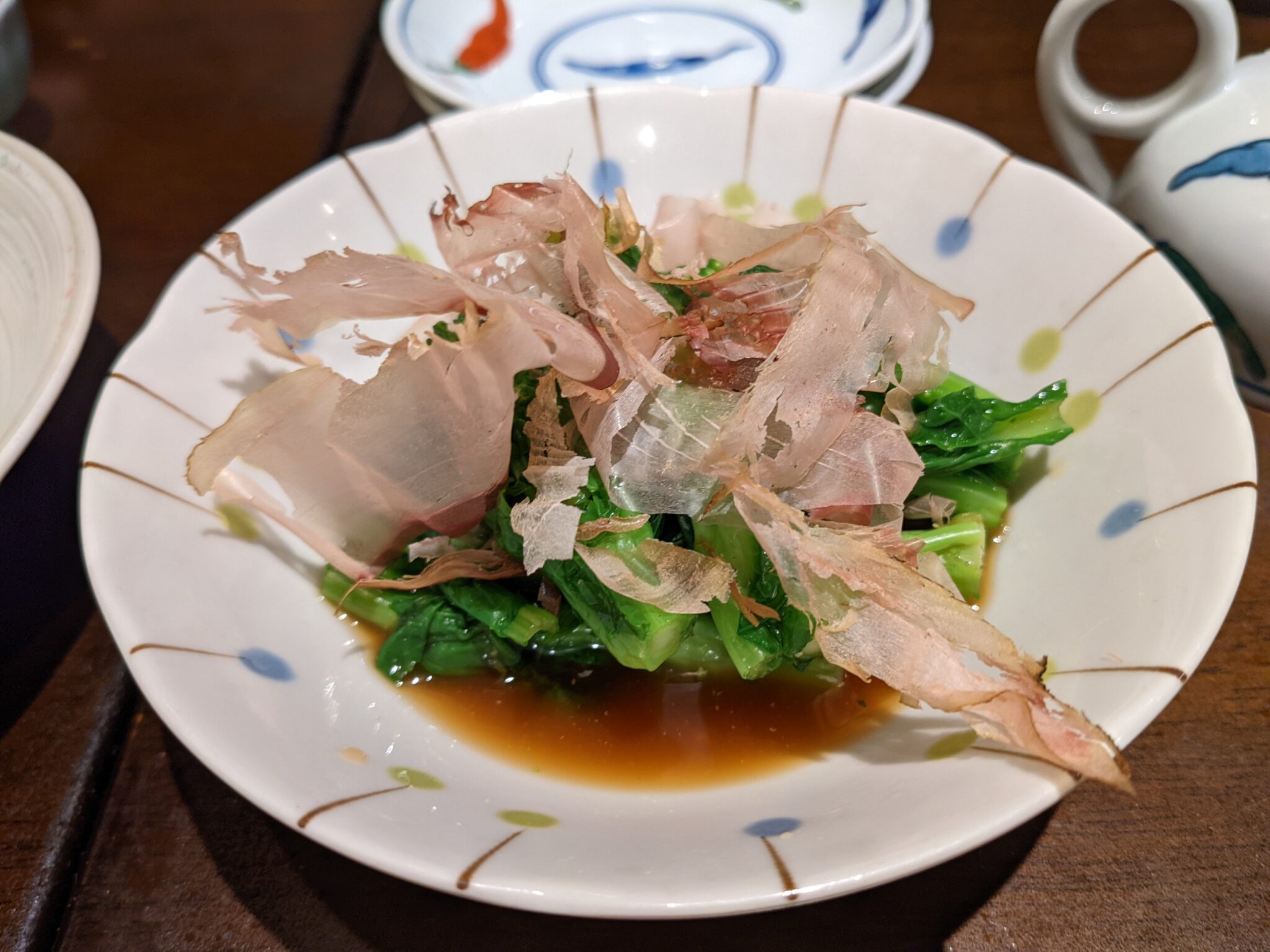The other night I had dinner with my wife and a couple of friends at a nice little soba izakaya in Meguro called Kawasemi (川せみ). The occasion was to have a night out with ‘Y’’ a Japanese friend who now lives in New York who had to come to Japan due to her ninety-five year old mother’s recent death, the dinner not just an opportunity to honor her mother, who the rest of us all knew, but also for our NY based friend to have a decent meal after being quarantined for a week or so.
The restaurant was selected by my friend ‘K’, someone who I have known since she was perhaps three years old and I eight or so. K has lived in Tokyo much longer than I have, and had been to Kawasemi many times, but not recently. It was the first time for the rest of us, although one night five years ago or so my wife tried to get in with K and her husband but failed as we arrived too late.
This time K had made reservations, so after meeting up at her house and drinking a bottle of sparkling wine we caught a cab over to the restaurant, arriving just before our 6:00 slot. Our table was in the back of the room; only four of the other table seats were in use due to corona safety protocols, an only four of the five seats at the counter.
The first thing we ordered from the quite extensive menu were two selections of sake, nurukan for my wife and Y, while K and I ordered the same sake but cold. Then it was time to get into the otsumami (appetizers) on the menu. Not having been in Japan in some time, Y wanted to eat the most basic and simple of soba-ya osumami, ita-wasa (kamaboko with wasabi-tsuke*). I ordered kaki-furai, in part because there were four pieces per order. We also ordered sashimi moriawase, nanohana, kamo shioyaki, and dashi tamago-yaki. Ordering soba would, as usual at soba shops, come after we finished filling ourselves with the preliminaries. We also ordered abother round of sake, my wife and Y the same warm sake, K and I a different, and not nearly as dry, cold one. Only later, as we walked out, did I notice a list of more sakes that were not on the actual menu, the menu on the wall blocked from view from where I was sitting.
The itawasa arrived first, four thick pieces of white kamaboko with some wasabi-tsuke and freshly grated wasabi. Then came the now in season nanohana, simmered in a shōyu sauce and covered with a big pile of freshly shaved katsuo-bushi which was followed by the fried oysters (kaki-furai), and then the sashimi. The sashimi included tako (octopus), hotate (scallop) and, I believe, some ma-dai. Next was the kamo (duck), which came with an assortment of grilled vegetables, then the dashi tamagoyaki. All of the portions were for two, so we could easily eat a wide variety of things without getting too filled up. One thing the folks at the table next to us had that looked good was a soba crepe with salad ingredients on the side to fill it with, kind of like a taco. Although it looked good, and healthy, K said it was also quite filling, so we skipped it. This time, anyway.
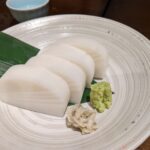
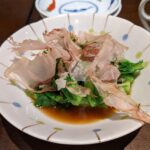
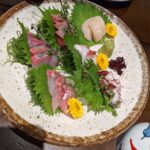
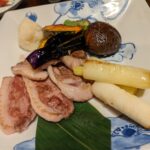
After all that it was time to decide on our soba.
I think we all ordered the nishoku (二色, meaning literally two colors) soba—regular seiro soba plus inaka (田舎, or country style) soba. The portions for both were very generous. I made my order the ni-shoku seiro tenpura soba, which came with two large kuruma ebi, renkon, nasu. Some sort of small white fish, and a pinma/pepper. Not bad, but I prefer more goma abura in for my tenpura. Kate and I added one more tokuri of sake to wash down the soba.
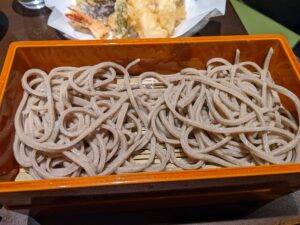
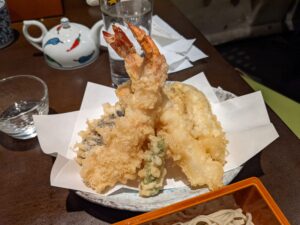

All in all it was a fun evening of eating good food with friends. And it wasn’t expensive at all, only ¥4,500 per person.
*About Itawasa. Itawasa is a common soba-ya appetizer, found on the menu of probably 99% of sit-down soba restaurants. It consists of slices of kamaboko (かまぼこor カマボコ) with wasabi tsuke (わさび着け) on the side. Kamaboko is a slightly gelatinous mix of pureed white fish, egg whites, salt, sugar, fish sauce and sake that is steamed and then pressed into loaves. The exact recipe, and flavor, may vary. There are records of it being made some 900 years ago. It is sold on small boards, or ita, which give the name ita-wasa, the wasa referring to the wasabi-tsuke that usually accompanies it. Wasabi-tsuke is generally some sort of mix of wasabi leaves, sake kasu (lees), and perhaps sugar or sake. It is easy to make, as long as you have access to wasabi leaves.
Kawasemi 川せみ
Tokyo, Minato-ku, Shimomeguro 2-17-23 東京都港区下目黒 2-17-23
03-3490-5959 03-3490-5959
